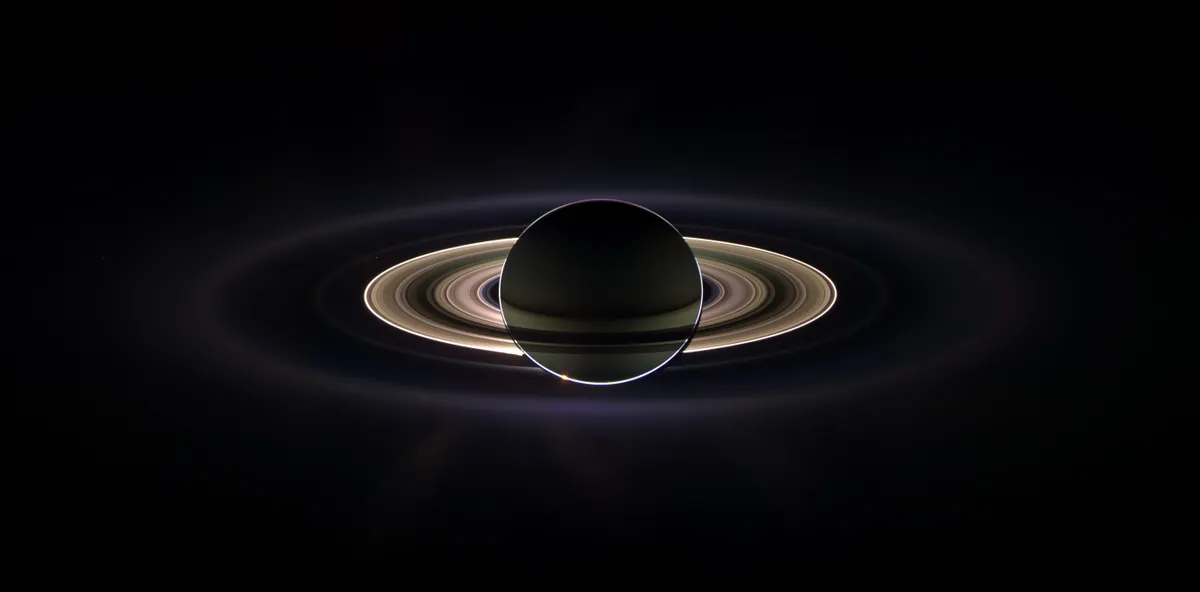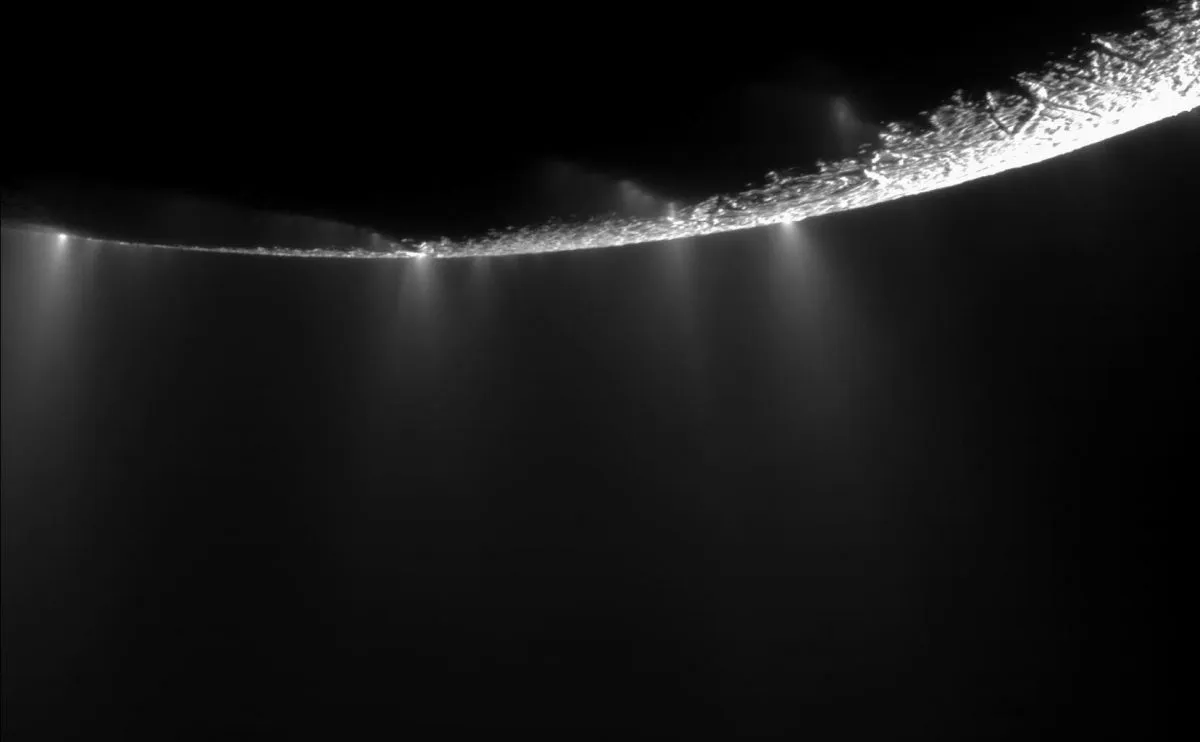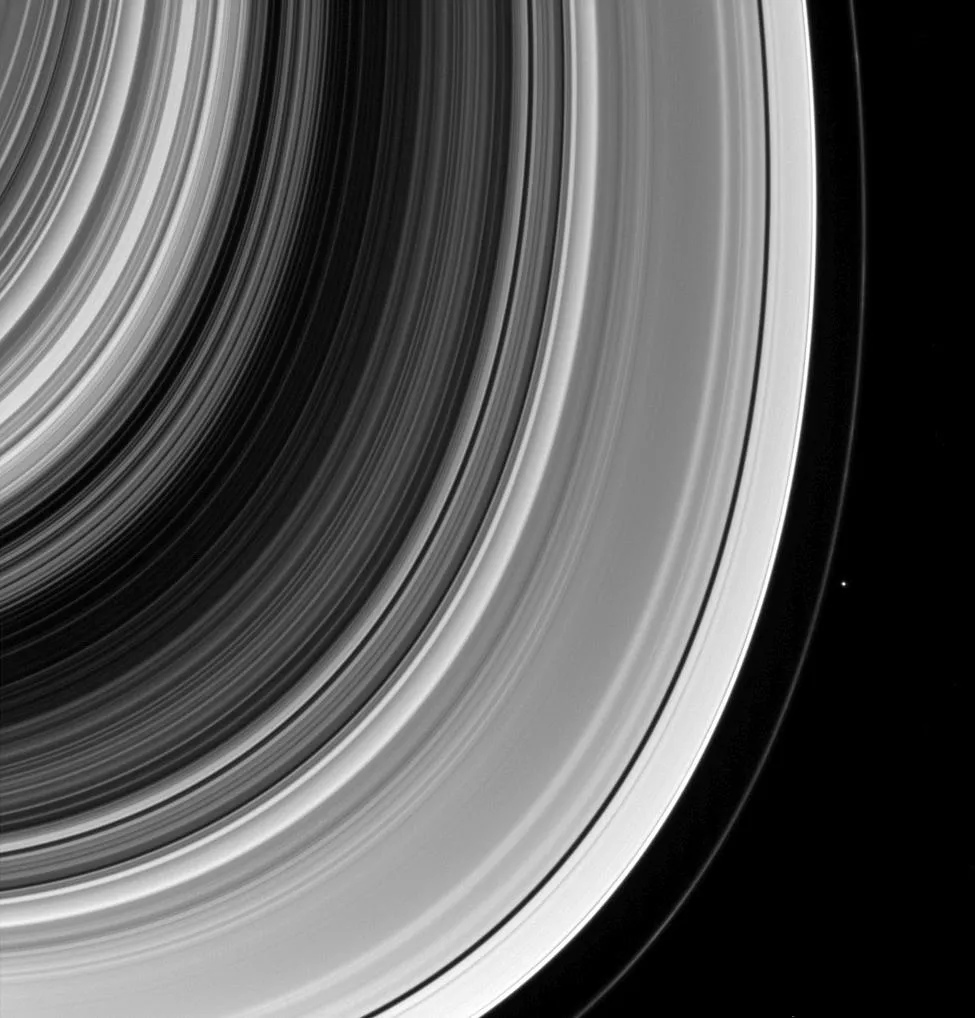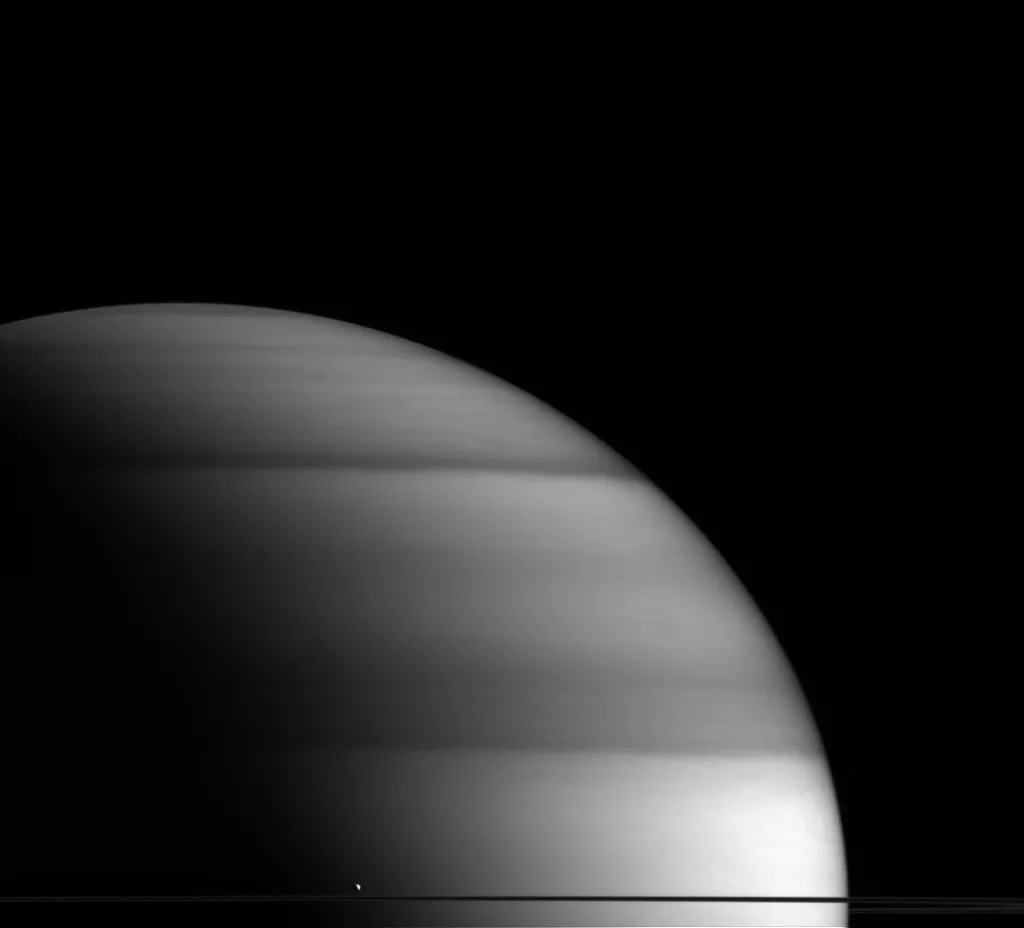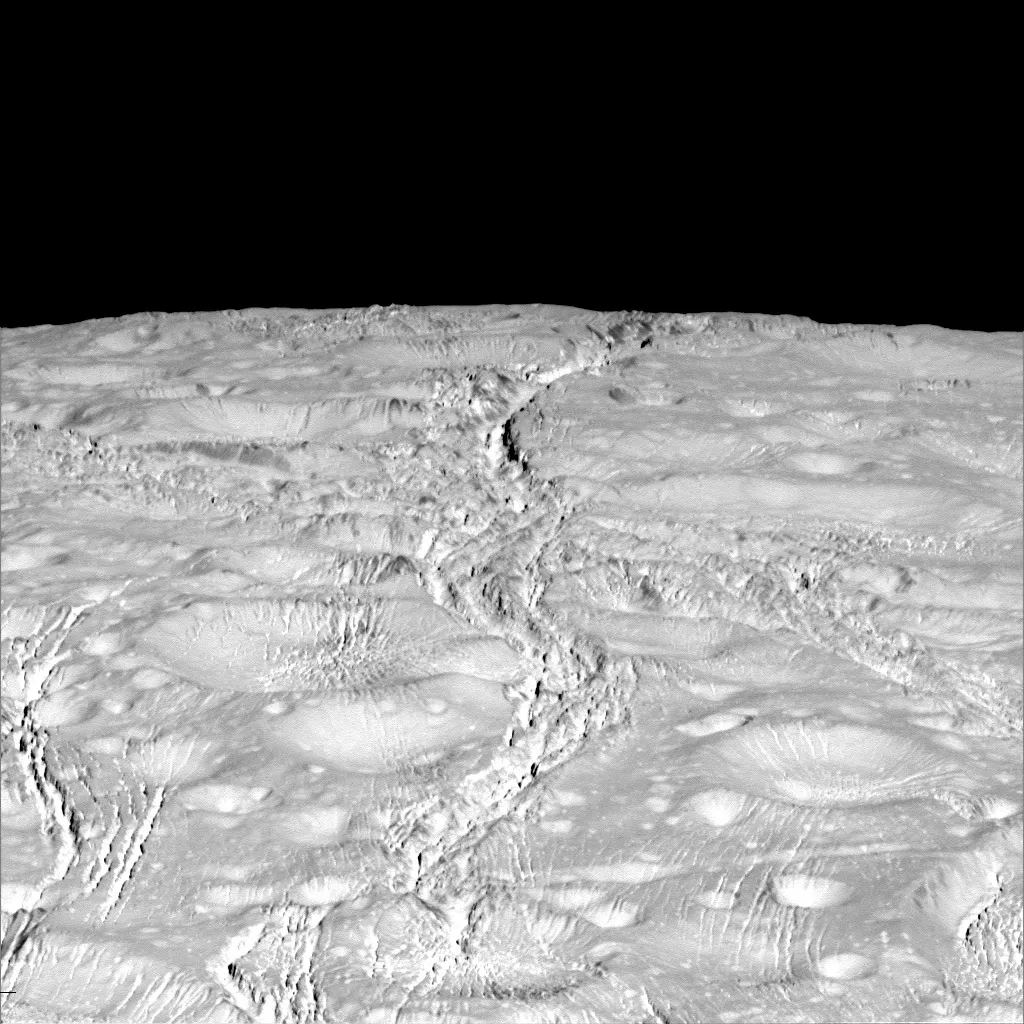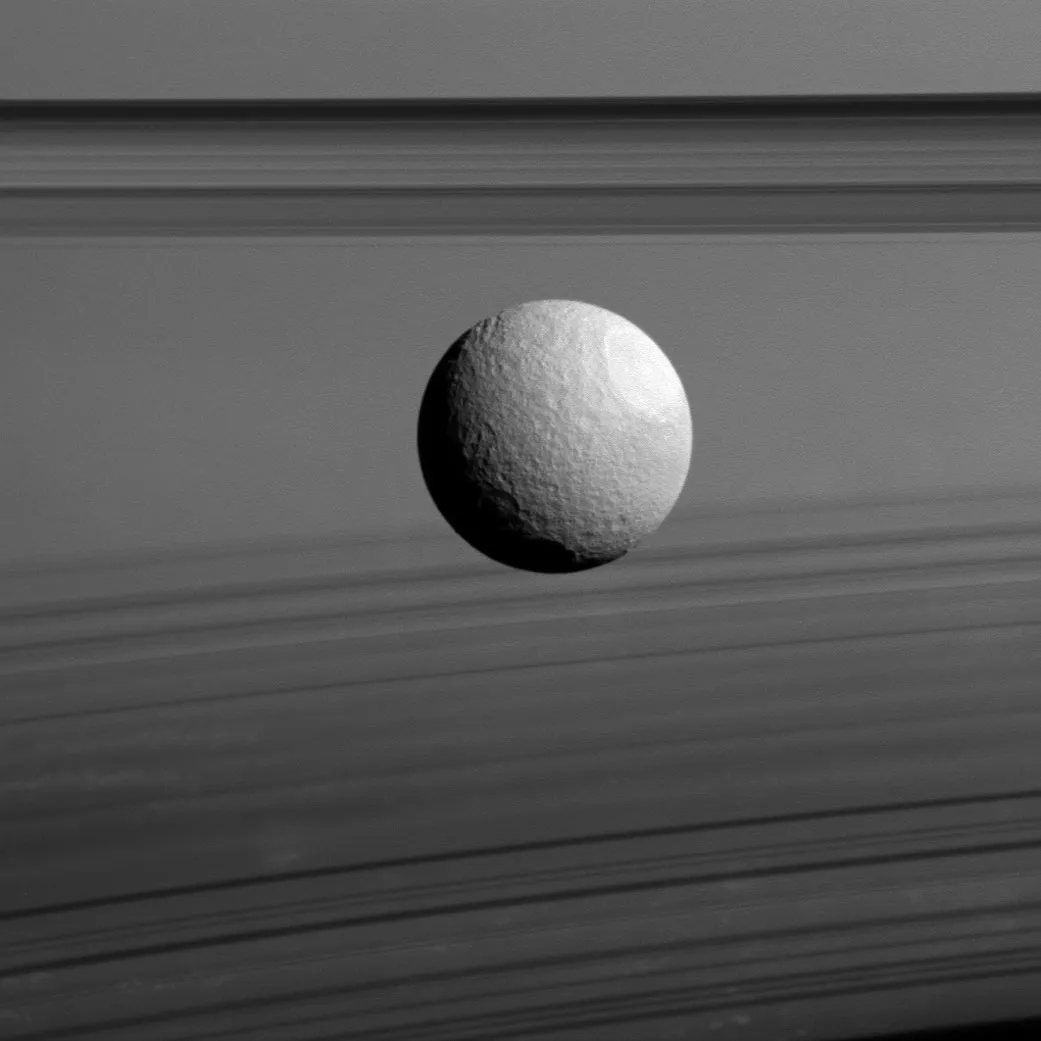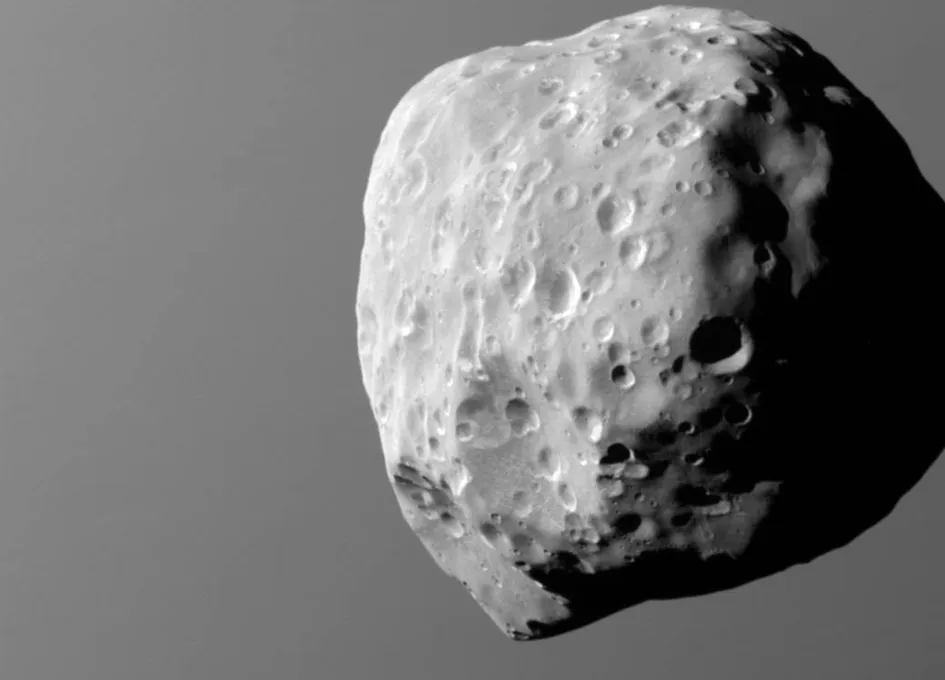Organic compounds have been discovered in plumes bursting through the surface crust of Saturn's icy moon Enceladus. The discovery is the latest boost in the search for conditions that could support life beyond Earth.
Enceladus is known to have a liquid water ocean hidden below its frozen crust, and hydrothermal vents regularly eject liquid water, ice and material from the moon's core out into space.
The newly-discovered molecules have been identified as nitrogen and oxygen-bearing compounds.
Similar compounds are involved in chemical reactions on Earth that produce amino acids: the building blocks of life.
The discovery was made using data from NASA's Cassini mission, which ended in 2017.
The Cassini spacecraft spent 13 years orbiting Saturn, studying the planet and its moons, and one of its most daring manoeuvres was a series of dives through the plumes on Enceladus.
Data collected by Cassini throughout the mission will continue to be analysed by scientists for years to come.
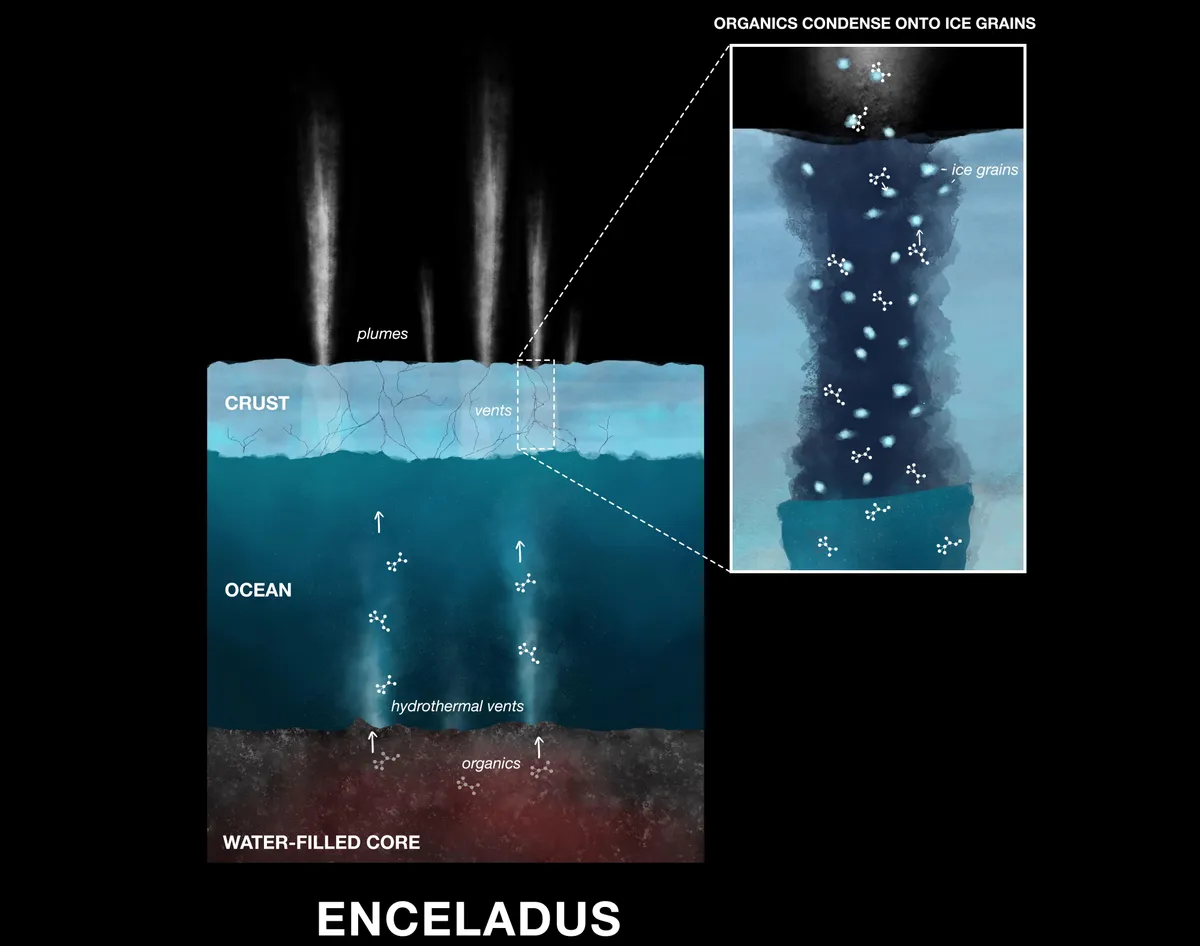
"If the conditions are right, these molecules coming from the deep ocean of Enceladus could be on the same reaction pathway as we see here on Earth," says Nozair Khawaja, who led the team behind the research, based at the Free University of Berlin.
"We don't yet know if amino acids are needed for life beyond Earth, but finding the molecules that form amino acids is an important piece of the puzzle."
The team analysed data from Cassini's Cosmic Dust Analyzer (CDA), which detected ice grains in plumes emitted from the moon.
Mass spectrometer measurements were then used to analyse the organic material in the sample and define its composition.
The organics had originally dissolved in the ocean below Enceladus's surface before evaporating, condensing and freezing onto ice grains within fractures in the moon's crust.
A rising plume then blew the ice grains into space, where they were analysed by the CDA.
"Here we are finding smaller and soluble organic building blocks," says study co-author Jon Hillier, "potential precursors for amino acids and other ingredients required for life on Earth."

